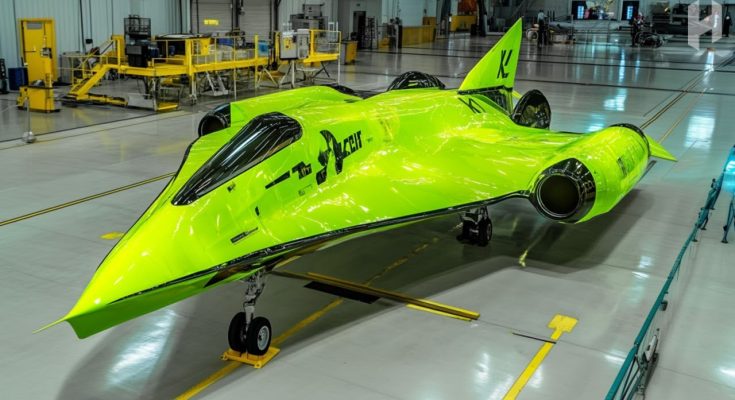The U.S. military is on the verge of an unprecedented technological breakthrough with the development of a hypersonic jet capable of breaking light speed. While the idea of a vehicle traveling faster than the speed of light may seem like science fiction, this new military innovation represents the pinnacle of aerodynamics, propulsion, and advanced physics. If successful, this hypersonic jet would provide the United States with a strategic advantage over global adversaries, including Russia, and redefine the future of air warfare and defense.
Hypersonic flight, defined as speeds exceeding Mach 5 (five times the speed of sound), is already a reality for several advanced military projects. However, the claim that this new jet can break light speed — theoretically around 300,000 kilometers per second — is a bold statement, grounded in research involving both hypersonic propulsion and theoretical physics. The jet would harness advanced technologies that go beyond what is currently possible with conventional jet engines or even known forms of propulsion like rockets.
While full details are still classified, reports suggest that the U.S. military has been working in partnership with top aerospace engineers and physicists to develop a jet capable of achieving these speeds. This jet would likely rely on a hybrid system of scramjet engines and quantum technologies, which could allow it to bypass the traditional limitations of speed and break through the light barrier. The development of this jet is part of a larger effort to develop next-generation weapons and technologies that can keep pace with adversaries like China and Russia, who are also advancing their own hypersonic capabilities.
What makes this project even more alarming is the strategic implications it carries. Russia, with its own advancements in hypersonic missile systems like the Zircon and Kinzhal, has long been a rival in the race for next-gen aerial warfare. A jet capable of breaking light speed would have the ability to reach any target on Earth in an instant, making it virtually impossible for any air defense system to intercept. For example, an attack jet could theoretically fly from U.S. soil to Russia in mere minutes, bypassing radar detection and taking out critical infrastructure or military assets with extreme precision.
Additionally, the potential military applications of such a jet are far-reaching. Not only would it enable rapid deployment of forces anywhere in the world, but it could also revolutionize intelligence gathering, strike missions, and defensive systems. In the event of a military confrontation, having such an advanced tool in the U.S. arsenal would allow for lightning-fast response times, with the ability to disrupt enemy plans and retaliate almost instantaneously.
The question of whether breaking light speed is physically possible remains open for debate. According to Einstein’s theory of relativity, objects with mass cannot exceed the speed of light because they would require infinite energy. However, this new hypersonic jet could incorporate cutting-edge quantum mechanics or utilize advanced warp drive theories, which are still largely hypothetical but could potentially challenge these traditional limits.
Despite the uncertainties surrounding the jet’s final capabilities, one thing is clear: the U.S. military is investing heavily in this technology, aiming to secure a significant edge in global defense. This hypersonic jet, should it become operational, would fundamentally alter the balance of power in the skies and set the stage for a new era in military aviation.
In conclusion, the U.S. military’s hypersonic jet capable of breaking light speed represents a transformational leap in air warfare technology. With its potential to reach targets at unprecedented speeds, including a potential mission to Russia within minutes, it marks a paradigm shift in the realm of global defense strategy, and the world is closely watching to see whether it can become a reality.



